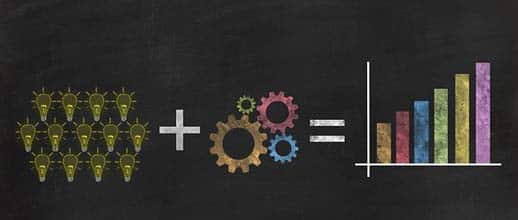Why a Pricing Model Isn’t Enough

Companies spend a considerable amount of money, time, and energy building models that deliver margin-minded pricing recommendations to their sales teams. Simply having a pricing model in place does not guarantee profitability, however. A pricing model is only as good as the extent to which it is 1. used and embraced by sales personnel, and 2. able to quickly adapt to changing business and market conditions.
Usage and Adoption
It’s impossible to maximize the effectiveness of even the best pricing model if your team isn’t using it. The first step in assessing your model is measuring how often your sales reps use the technology that delivers price recommendations and then how frequently they adopt its recommended prices.
On the usage side, you want 100% of your reps using the tool so that every time they go to price an opportunity, they see the modeled price. If you find you don’t have buy-in from all members of your team, it’s important to investigate why – have they not been properly trained to use the quote tool? Have they found the model doesn’t apply to specific situations? Have they not been shown how using the tool benefits not only the company’s bottom line but also their own wallets? Understanding their reluctance will allow you to determine what next steps are necessary for course correction.
Once your team is consistently utilizing the tool, it is imperative to track how often your reps adopt the recommended price. When an actual price falls out of range – more than a 2.5% deviation from the recommended price – examining patterns in the data will allow you to identify the cause and point you toward potential solutions.
- If the recommended price for a given product is adopted nearly universally except in a few instances, such issues can likely be resolved by working with individual team members to bolster their confidence in the tool’s accuracy and efficacy.
- If adoption of a product’s recommended price is low across the board, that indicates that the model is deficient in some way, and analysis must be performed to understand why the tool is not providing the right recommendations to the field.
Continuous Improvement
Because your business and its pricing model don’t operate in a vacuum, regular diagnosis of such KPIs as adoption, margin, and win rate is necessary to assess the health of the model and identify parameters that require adjustment. For example:
- Low adoption and win rates could indicate that a new competitor has entered the market (or that an existing player is behaving differently), and the model must be adjusted to suit changing market conditions.
- High win rates and adoption levels, and healthy margins may suggest it is time to look for opportunities to inch pricing upward to gain more margin.
- Slowing quote activity may indicate a softening market; pulling a pricing lever could allow you to offload inventory or continue to generate orders (and cash) in a slow period.
- Conversely, increased levels of quoting could suggest that the market is trending upward, and that may be an early indicator to adjust pricing to capitalize on the opportunity.
Analyzing your business’ sales data in the context of the sales team’s usage of the quote tool and adoption of its recommended prices will allow you to make adjustments to your sales processes and pricing model that yield continuous margin improvement in 2021 and beyond.


